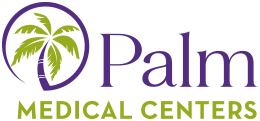Bacteria Skin Infections
Introduction

Anatomy
Causes
Cellulitis & Erysipelas
Cellulitis infections can affect both the skin and the body in general. Sites of Staph or Strep bacteria entry include bed sores (skin ulcers), skin wounds, skin cracks, burns, insect bites, surgical incisions, or other skin openings.
Folliculitis
Folliculitis is a bacterial infection that develops in a hair follicle. The follicle is the part of the hair that is responsible for growth. It is located beneath the skin. Soaking in contaminated whirlpools, swimming pools, and hot tubs are common causes of folliculitis.
Furuncles and Carbuncles
Furuncles and carbuncles are infections that drain via the hair follicle and can develop following folliculitis. They may appear as a deep abscess and drain pus.
Impetigo
Impetigo infections most frequently occur on the arms, legs, and face of children, especially those with poor hygiene living in warm humid environments. Bacteria may enter the skin via insect bites or scrapes. Impetigo is easily spread from person to person contact and commonly occurs in places of crowded living conditions.
Secondarily Infected Dermatoses
Secondarily infected dermatoses are bacterial infections that develop following other skin irritations, such as allergic skin reactions and psoriasis.
Symptoms
Diagnosis
Your doctor can diagnose a bacterial infection by reviewing your medical history, examining you, and taking some tests. Samples from the affected site may be obtained to culture the bacteria to help identify what kind it is. Blood tests and antibacterial sensitivity tests may also be used to aid diagnosis and treatment planning.Treatment
Treatment for bacterial skin infections depends on the type and severity of the infection. Antibiotics may be applied to the skin in the form of creams, lotions, or liquids. Infections that have spread throughout the body are treated with antibiotics. In cases of severe infections, surgery may be necessary.Prevention
Am I at Risk
Breaks in the skin, poor hygiene, and exposure to bacteria are risk factors for bacterial skin infections.Complications
Skin infections can leave scars. Severe skin infections may require significant surgery and even skin grafts. In some cases, systemic infections can cause mental confusion or death.
Copyright © - iHealthSpot Interactive - www.iHealthSpot.com
This information is intended for educational and informational purposes only. It should not be used in place of an individual consultation or examination or replace the advice of your health care professional and should not be relied upon to determine diagnosis or course of treatment.
The iHealthSpot patient education library was written collaboratively by the iHealthSpot editorial team which includes Senior Medical Authors Dr. Mary Car-Blanchard, OTD/OTR/L and Valerie K. Clark, and the following editorial advisors: Steve Meadows, MD, Ernie F. Soto, DDS, Ronald J. Glatzer, MD, Jonathan Rosenberg, MD, Christopher M. Nolte, MD, David Applebaum, MD, Jonathan M. Tarrash, MD, and Paula Soto, RN/BSN. This content complies with the HONcode standard for trustworthy health information. The library commenced development on September 1, 2005 with the latest update/addition on February 16, 2022. For information on iHealthSpot’s other services including medical website design, visit www.iHealthSpot.com.






